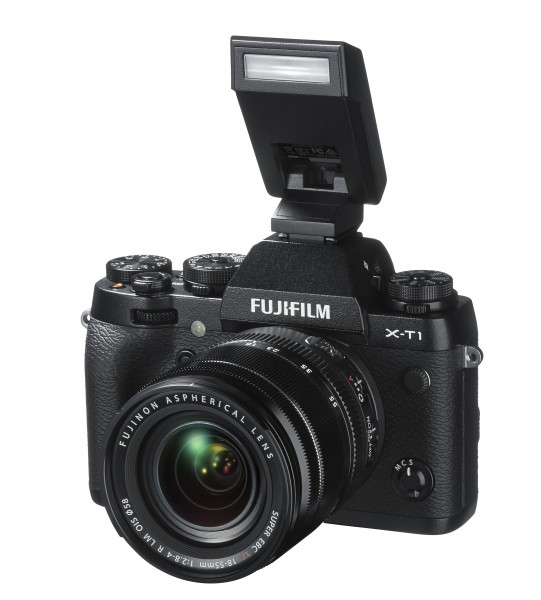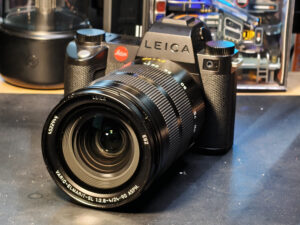Fujifilm created quite a stir lately when it unveiled its X-T1 mirrorless camera aimed at professionals.
Now we know it’s set to be out by the end of February in Singapore, and you get an option to buy a S$2,499 kit that comes with the excellent 18-55mm f2.8-4 lens, or just pay $1,999 for the body alone.
Getting my hands on the camera on Monday, my first reaction is that it borrows some of the interesting look and feel of other rivals.
It feels a little like an Olympus OM-D through its aesthetics, but it comes in a slightly bulkier frame, which I welcome. Dials-wise, the Fujifilm X-T1 reminds me of the Nikon Df launched late last year.
Holding the camera, current Fujifilm users will get quickly familiar with the X-T1, thanks to a top plate that resembles the company’s previous X-Pro1 camera.
The back of the X-T1 is a little different, when compared to another model – the X-E2 – but that’s for the better. The buttons are placed where the right thumb would usually rest, so you get the Q button for quick access and focus assist when using manual focusing.
Another plus: the exposure advancement and exposure modes can also be controlled using a lever located at the base of the ISO and shutter dial. This is way better than changing the settings via the screen.
Pluses aside, the design does come with some downsides that somewhat undo what the company’s X models have achieved.
The four-way button is now more recessed and the buttons become smaller all in the name of weather proofing the X-T1. The shutter button also does not allow the screw-in plunger style shutter release cable that is the signature feature of high-end X-models.
I particularly miss this because the soft-release button on the X-T1 doesn’t provide a better feel when it comes to firing with the camera. I feel that I have to press the button that wee-bit more just to get a reaction from the camera.

The back has changed. On top of the inclusion of the articulated screen, the buttons are placed at the right places.

The Fujifilm 16.3 MP APS-C X-Tran CMOS II sensor.

Indoor shot on AWB, in “Astia” film simulation mode. Subject lit by the sun through a glass roof.

The new ISO Dial just like the Nikon Df with one huge improvement – the Auto-ISO mode can be easily switched on. Unfortunately, the trend going towards locking down all the dials is not something I like. Every time the ISO setting is to be changed, the dial has to be unlocked. Fortunately the shutter dial needs only unlock once from ‘A’ mode to be free-moving. No such problems for the Exposure Value compensation dial.

The main selling point of the X-T1 – the excellent Electronic View Finder
Ergonomics aside, the X-T1’s will attract users because it is weather-sealed, similar to the Olympus OM-D EM-1 and EM-5.
However the main focus should be on the excellent electronic view finder that is in the X-T1. It really shows what a modern viewfinder is capable of nowadays, with a fast refresh rate even when shooting continuously.
During my quick hands-on test at a media event, I never felt disorientated while tracking a moving subject. The viewfinder magnification of 0.77x reminds me of viewfinders of full-frame digital SLR cameras, which is a nice addition and will no doubt make the X-T1 much more comfortable when you shoot through the electronic viewfinder.
All in, it is very interesting to see Fujifilm meeting the needs of professionals with a bigger and faster viewfinder, dials with locks and weather sealing. However, all these features do make the camera a little bit more cumbersome.
Although I liked Fujifilm’s classic X100 slowing me down to shoot, making it a chore, even when pressing a button or unlocking, is not what I would like to see in a camera.
With the new X-T1, I appreciate that some of the more important functions can now be controlled directly and quickly without going deep into the menu.
For photographers who have seen the evolution of the Fujifilm X series cameras, the X-T1 is arguably the company’s best offering so far, addressing most of the issues that affected the previous models and yet maintaining their signature image quality with the company’s X-Tran sensor.
Check out more sample shots from the camera here.





